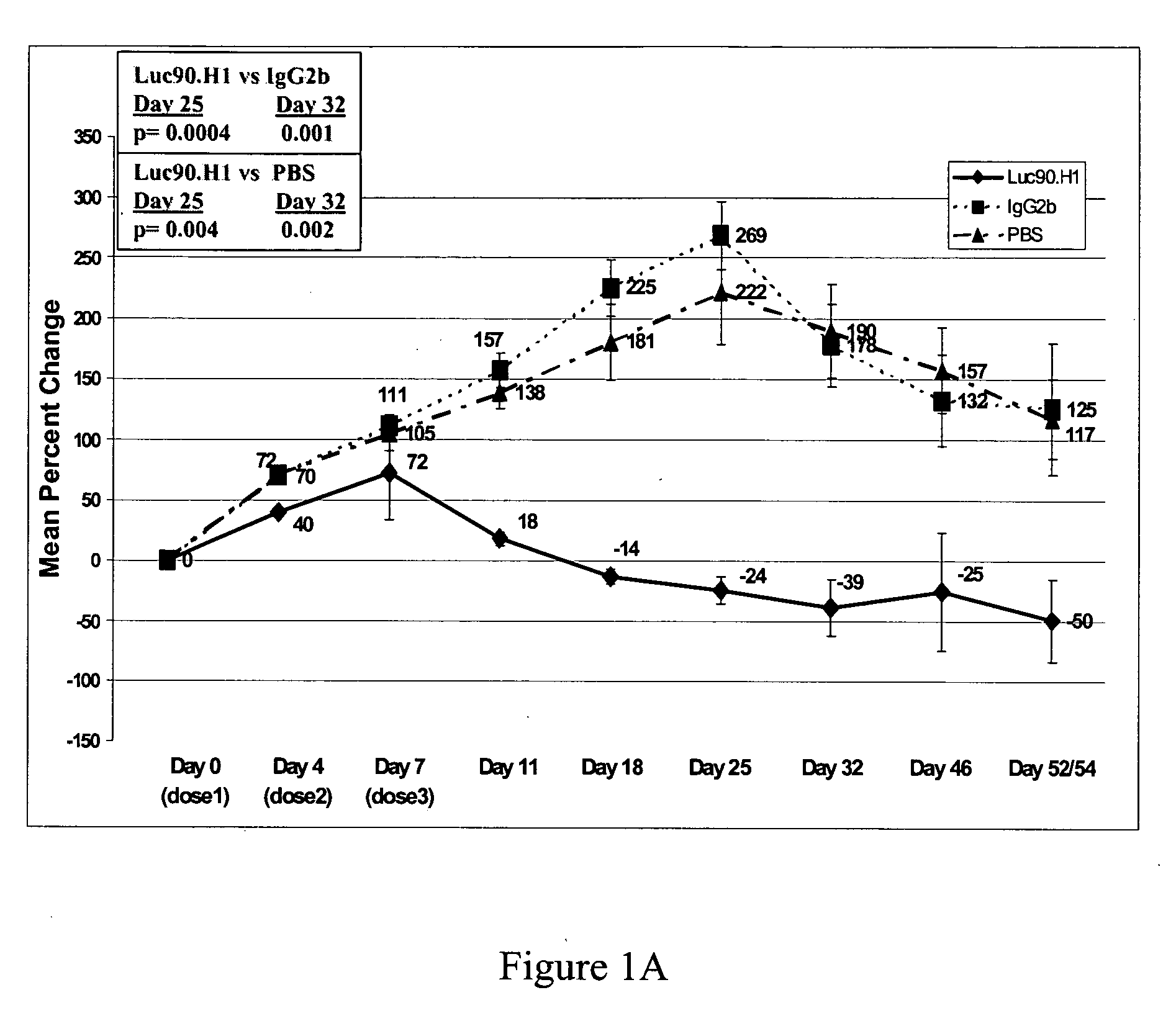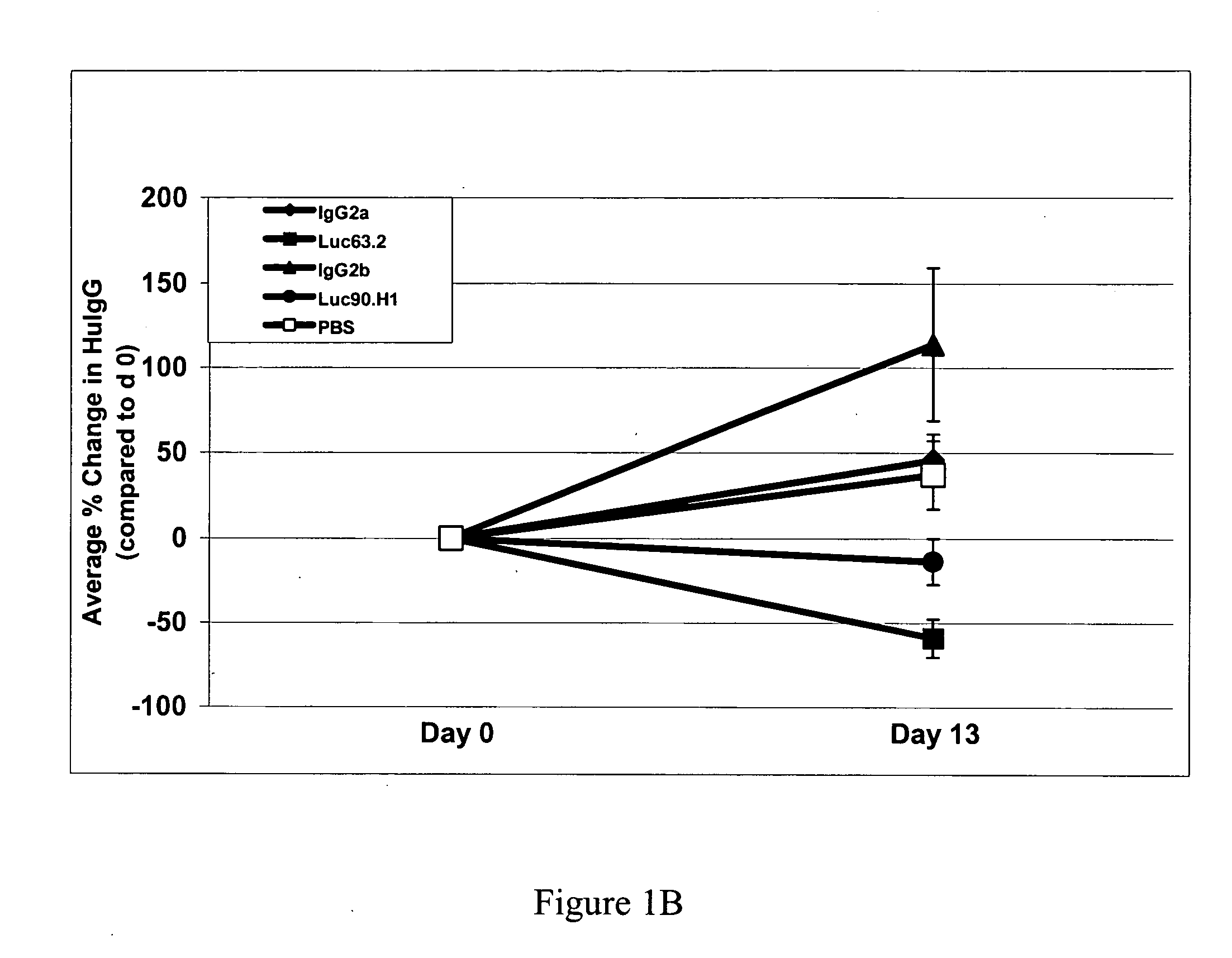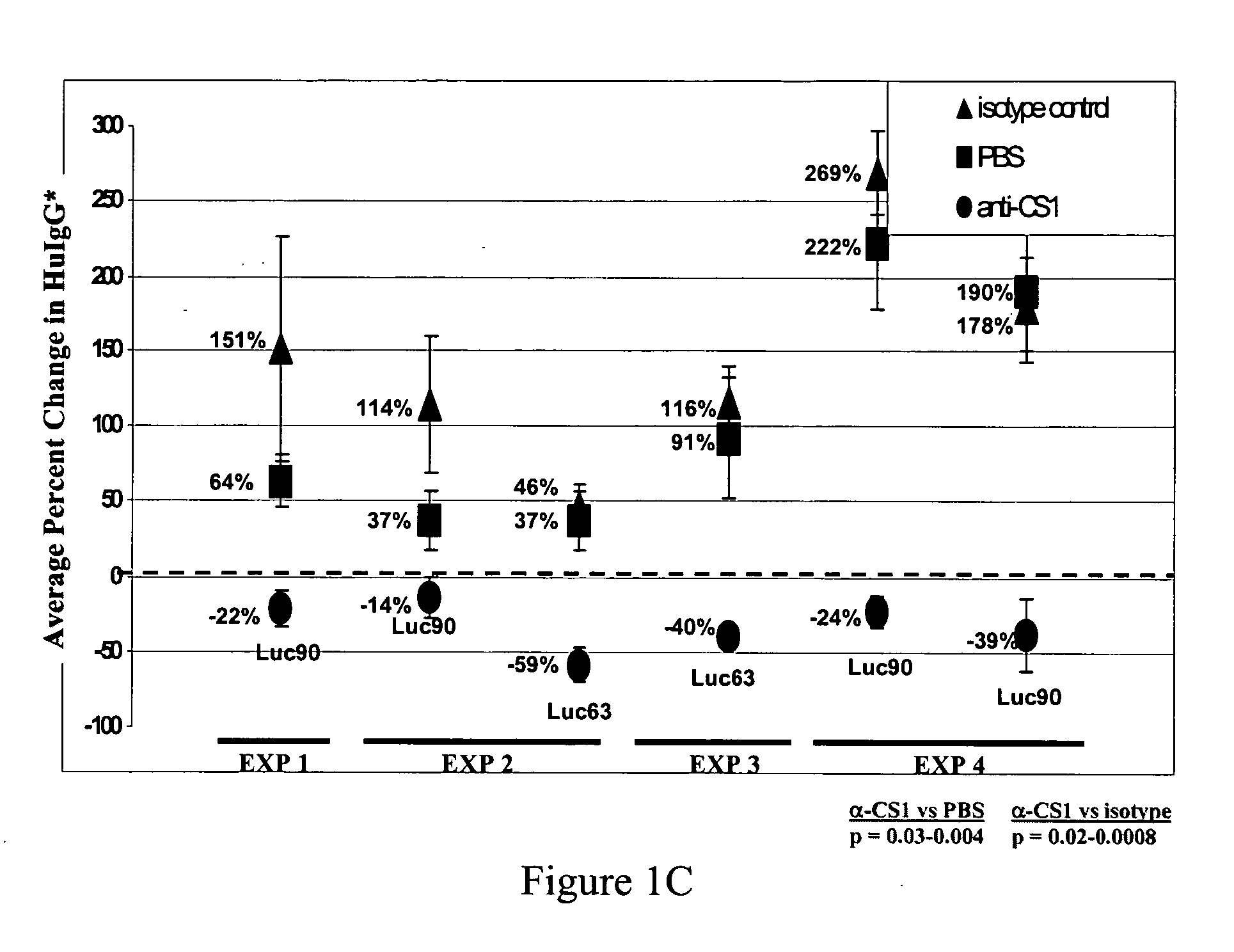Therapeutic use of anti-CS1 antibodies
- Summary
- Abstract
- Description
- Claims
- Application Information
AI Technical Summary
Benefits of technology
Problems solved by technology
Method used
Image
Examples
example 1
Isolation and Identification of CS1
[0240] CS1 was identified from a cDNA subtraction library of B-cell subsets (naïve vs. memory+plasma B cells) from normal healthy adult peripheral blood. CS1 was preferentially expressed among the memory and plasma B cells. Subtraction libraries were produced by following the protocol described below:
Isolation of B-cell Subsets:
[0241] Peripheral blood mononuclear cells (PBMCs) were isolated from nine healthy adult donors with standard Ficoll-hypaque gradients. B cells were isolated from the PBMCs by following a standard negative selection protocol. PBMCs were incubated in an antibody cocktail of purified mouse anti-human CD2, CD3, CD4, CD14, CD16, CD56, CD66 and glycophorin A. After incubation and washing, goat-anti-mouse magnetic Dynal beads were added at 7-10 beads per cell. Subsequently, the antibody-bound cells were isolated with a standard Dynal magnetic holder to leave enriched B cells in the supernatants. The collected supernatants were ...
example 2
Differential Expression of CS1
Human Cells:
[0248] Peripheral blood mononuclear cells (PBMCs) were obtained by isolation from standard Ficoll-hypaque gradients. Isolated PBMCs were then resuspended at 2×106 cells / ml in a fresh culture medium. PBMCs were stimulated with phytohemagglutinin (PHA) at a concentration of 3 μg / ml for 3 days, or with pokeweed mitogen (PWM) at a concentration of 10 μg / ml for 8 days. Unstimulated control PBMCs were prepared without any stimulus. Cells were cultured at 37° C. in 7% CO2 in RPMI medium with 10% FBS, penicillin, streptomycin, and glucose additives.
Mouse Cells:
[0249] Spleens were obtained from two Balb / c mice. The spleens were placed on 100 micron filter. Cells were disaggregated and washed with PBS, and centrifuged at 1,500 rpm for 10 minutes. Red blood cells were lysed with 2 ml of lysis buffer at 37° C. for 2 minutes. Cells were washed twice, resuspended in 10 ml of the medium and counted. A portion of the unstimulated cells was frozen dire...
example 3
Production of Anti-CS1 Monoclonal Antibodies
Immunogens for Human CS1:
[0373] The purified recombinant human CS1 ECD-γ3 fusion protein was used to immunize Balb / c mice via footpads (CS1 ECD refers to the extracellular domain of CS1 described above). Briefly, mice were immunized in the hind footpads with 10 μg protein with an equal volume of Ribi adjuvant in a total volume of 25 μl. Footpad immunizations were performed 4 times at 4- or 5-day intervals.
[0374] a. Cell Fusion:
[0375] Two mice immunized with CS1 ECD-γ3 were sacrificed. The popliteal femoral and sacral lymph nodes were removed from the mice. Lymphocytes were isolated from the tissues, and hybridomas were generated by standard procedures. Briefly, hybridomas were generated by polyethylene glycol (PEG) 1500 mediated fusion between lymphocytes and a murine myeloma cell line (NSO cells). Fused cells were plated into 96-well plates at a density of 107 cells per plate. Selection of fused cells was accomplished using HAT (hypo...
PUM
| Property | Measurement | Unit |
|---|---|---|
| Composition | aaaaa | aaaaa |
| Cytotoxicity | aaaaa | aaaaa |
| Affinity | aaaaa | aaaaa |
Abstract
Description
Claims
Application Information
 Login to View More
Login to View More - Generate Ideas
- Intellectual Property
- Life Sciences
- Materials
- Tech Scout
- Unparalleled Data Quality
- Higher Quality Content
- 60% Fewer Hallucinations
Browse by: Latest US Patents, China's latest patents, Technical Efficacy Thesaurus, Application Domain, Technology Topic, Popular Technical Reports.
© 2025 PatSnap. All rights reserved.Legal|Privacy policy|Modern Slavery Act Transparency Statement|Sitemap|About US| Contact US: help@patsnap.com



